Somatic archeology represents a fascinating intersection of bodywork, trauma therapy, and consciousness studies that has emerged over the past several decades. This interdisciplinary approach views the human body as a living archive of experiences, memories, and inherited patterns that can be “excavated” through careful attention and specialized techniques. Unlike traditional archeology which unearths physical artifacts from the earth, somatic archeology seeks to uncover the layers of experience held within our tissues, nervous system, and cellular memory.
Foundations and Core Beliefs
At the heart of somatic archeology lies the fundamental belief that the body stores not only our personal experiences but also ancestral and collective memories. This perspective draws from multiple traditions and scientific discoveries. The field acknowledges that trauma, emotions, and significant life experiences create physical imprints in our muscular patterns, fascial restrictions, breathing habits, and nervous system responses. These embodied memories often operate below the threshold of conscious awareness, yet profoundly influence our behavior, health, and capacity for connection.
The theoretical framework of somatic archeology rests on several key principles. First is the concept of tissue memory – the idea that muscles, fascia, and organs can hold emotional and energetic imprints from past experiences. This notion, while initially met with skepticism, has gained support from research in fields like psychoneuroimmunology and epigenetics. Second is the understanding of the body as a complex information system where physical symptoms often represent unresolved psychological or spiritual material seeking expression and integration.
Practitioners of somatic archeology also embrace the concept of “body time” – the recognition that the body operates on different temporal rhythms than the conscious mind. While our thoughts move rapidly from past to future, the body often remains frozen in moments of unresolved experience, particularly trauma. This temporal disjunction creates what somatic archeologists call “time capsules” in the body – areas where past experiences remain energetically active and influence present-moment reality.
Historical Development and Influences
The roots of somatic archeology can be traced through multiple lineages. Wilhelm Reich’s pioneering work on character armor in the 1930s and 1940s laid crucial groundwork by demonstrating how psychological defenses manifest as chronic muscular tensions. Reich’s student Alexander Lowen further developed these ideas through Bioenergetic Analysis, mapping specific emotional holdings to particular body segments and developing techniques to release these blockages.
In parallel, the osteopathic tradition, particularly through the work of William Garner Sutherland and his development of craniosacral therapy, contributed the understanding that the body’s tissues hold an inherent wisdom and capacity for self-correction when properly supported. This lineage emphasized the importance of listening to the body’s subtle rhythms and following rather than forcing therapeutic change.
The human potential movement of the 1960s and 1970s brought these various streams together with Eastern contemplative practices, indigenous healing traditions, and emerging research in consciousness studies. Pioneers like Ida Rolf with Structural Integration, Moshe Feldenkrais with his method of somatic education, and Marion Rosen with her approach to emotional release through touch, each contributed unique perspectives on accessing and integrating body-held material.
The formal articulation of somatic archeology as a distinct approach emerged in the 1990s and early 2000s, as practitioners began synthesizing trauma research, particularly Peter Levine’s Somatic Experiencing and Bessel van der Kolk’s work on trauma’s impact on the body, with depth psychological perspectives and energy medicine. This synthesis was further enriched by advances in neuroscience, particularly the understanding of implicit memory, neuroplasticity, and the polyvagal theory developed by Stephen Porges.
Core Techniques and Methodologies
Somatic archeology employs a diverse array of techniques designed to access and integrate body-held material. These methods share certain common elements: careful attention to present-moment sensation, respect for the body’s inherent wisdom, and a non-invasive approach that honors the client’s natural defensive structures while gently inviting expansion.
Body scanning and micro-movement exploration form the foundation of many somatic archeological practices. Practitioners guide clients in developing refined awareness of subtle sensations, tensions, and movement impulses. This process often reveals areas of numbness, chronic tension, or energetic congestion that mark sites of unintegrated experience. Through patient attention and gentle inquiry, these areas begin to “speak,” revealing their stories through sensation, image, emotion, or spontaneous movement.
Touch and manual therapy techniques in somatic archeology differ from conventional bodywork in their primary intention. Rather than focusing on structural correction or relaxation, the touch serves as a form of listening and dialogue with the tissues. Practitioners develop highly refined palpation skills that allow them to sense not only physical restrictions but also energetic and emotional qualities held within the tissues. This “listening touch” creates a safe container for the body to begin releasing long-held patterns.
Breathwork serves as both an assessment tool and intervention method. Different breathing patterns are understood to reflect and maintain specific psychological states and defensive structures. By carefully observing and gently modifying breathing patterns, practitioners can help clients access and integrate previously unconscious material. The breath serves as a bridge between voluntary and involuntary processes, making it particularly valuable for working with trauma and deeply held patterns.
Movement and expressive techniques allow the body to complete interrupted defensive responses and discharge accumulated activation. This might involve following spontaneous movement impulses, engaging in specific movements that evoke particular emotional states, or using creative expression to give form to previously formless sensations. The emphasis remains on authentic, emergent movement rather than prescribed exercises.
The Archeological Process
The practice of somatic archeology typically unfolds in layers, much like a traditional archaeological excavation. The initial phase involves establishing safety and developing somatic awareness. Many clients begin with limited capacity to sense their internal landscape, particularly if they have histories of trauma or chronic disconnection from their bodies. This phase focuses on building resources, establishing a felt sense of safety, and developing the capacity for self-regulation.
As clients develop greater somatic literacy, the excavation process can deepen. Practitioners guide clients in exploring the “strata” of their embodied experience – from surface muscular tensions through deeper fascial patterns to what some describe as cellular or energetic imprints. Each layer may reveal different time periods, relationships, or themes in the client’s life. A chronic shoulder tension might initially reveal recent work stress, then deeper exploration might uncover childhood experiences of carrying emotional burdens, and still deeper work might touch ancestral patterns of bearing hardship.
The integration phase involves not just uncovering but also metabolizing and integrating discovered material. This process requires careful pacing and attention to the client’s capacity to digest new awareness. Integration might involve somatic practices, creative expression, ritual, or changes in daily life patterns that support the embodiment of new ways of being.
Contemporary Applications and Innovations
Modern somatic archeology has expanded beyond individual therapy to address collective and intergenerational trauma. Practitioners work with communities affected by historical trauma, recognizing that the impacts of slavery, colonization, war, and displacement are held not only in individual bodies but in the collective somatic field of communities. This work often involves group processes that allow for the shared witnessing and metabolization of collective wounds.
The field has also developed specialized applications for specific populations and conditions. Somatic archaeologists work with developmental trauma, supporting clients in completing early developmental movements and establishing missing foundations for secure attachment. Others focus on pre- and perinatal experiences, helping clients access and integrate very early imprints that shape fundamental patterns of being in the world.
Recent innovations include the integration of technology, such as biofeedback devices and heart rate variability monitors, to provide additional windows into the body’s patterns and responses. Virtual reality environments are being explored as ways to create safe containers for revisiting and reworking traumatic experiences. However, many practitioners emphasize that technology should support rather than replace the fundamental human connection and embodied presence at the heart of the work.
Challenges and Controversies
Somatic archeology faces several significant challenges and areas of controversy. The field’s claims about cellular memory and inherited trauma, while increasingly supported by epigenetic research, remain contentious within mainstream science and medicine. Critics argue that some practitioners make unfounded claims about the specificity of body-reading and the ability to accurately identify particular past experiences through tissue palpation.
The question of false memories presents another challenge. As somatic archeology often involves accessing non-verbal, implicit memories, there is ongoing debate about the accuracy and interpretation of what emerges. Responsible practitioners emphasize that what surfaces should be understood as the body’s present-moment experience of past events rather than literal historical truth, but this distinction can be difficult to maintain in practice.
Training and standardization present ongoing challenges. The field draws from so many disciplines and traditions that establishing coherent training standards and ethical guidelines remains difficult. This diversity, while enriching, can also lead to wide variations in practice quality and theoretical understanding.
Future Directions
The future of somatic archeology appears to be moving toward greater integration with neuroscience, trauma-informed care, and social justice frameworks. As our understanding of the nervous system, particularly the social engagement system and the neurobiological impacts of oppression, continues to develop, somatic archeology evolves to incorporate these insights.
There is growing interest in research that could validate and refine somatic archaeological approaches. Studies on interoception, embodied cognition, and the therapeutic mechanisms of body-based interventions are beginning to provide scientific frameworks for understanding how and why these approaches work. This research may help bridge the gap between somatic archeology and mainstream healthcare.
The field is also grappling with questions of cultural sensitivity and decolonization. Many somatic archaeological techniques draw from indigenous and non-Western traditions, raising questions about cultural appropriation and the need to honor source traditions. Contemporary practitioners increasingly recognize the importance of understanding somatic patterns within cultural contexts and avoiding universal assumptions about body-meaning relationships.
Bibliography
Aposhyan, Susan. Body-Mind Psychotherapy: Principles, Techniques, and Practical Applications. New York: W.W. Norton & Company, 2004.
Bainbridge Cohen, Bonnie. Sensing, Feeling, and Action: The Experiential Anatomy of Body-Mind Centering. 3rd ed. Northampton, MA: Contact Editions, 2012.
Barratt, Barnaby B. The Emergence of Somatic Psychology and Bodymind Therapy. London: Palgrave Macmillan, 2010.
Berceli, David. The Revolutionary Trauma Release Process: Transcend Your Toughest Times. Vancouver: Namaste Publishing, 2008.
Blackburn, Elizabeth and Elissa Epel. The Telomere Effect: A Revolutionary Approach to Living Younger, Healthier, Longer. New York: Grand Central Publishing, 2017.
Bodynamic International. Foundations of Bodynamic Analysis: System, Settings, and Skills. Copenhagen: Bodynamic International Publications, 2005.
Caldwell, Christine. Getting Our Bodies Back: Recovery, Healing, and Transformation through Body-Centered Psychotherapy. Boston: Shambhala Publications, 1996.
Caldwell, Christine, ed. Getting in Touch: The Guide to New Body-Centered Therapies. Wheaton, IL: Quest Books, 1997.
Chodron, Pema. When Things Fall Apart: Heart Advice for Difficult Times. Boston: Shambhala Publications, 2016.
Damasio, Antonio. The Feeling of What Happens: Body and Emotion in the Making of Consciousness. New York: Harcourt Brace, 1999.
Diamond, Michael J. and Christopher Christian, eds. The Second Century of Psychoanalysis: Evolving Perspectives on Therapeutic Action. London: Karnac Books, 2011.
Dychtwald, Ken. Bodymind. Los Angeles: Jeremy P. Tarcher, 1986.
Fehmi, Les and Jim Robbins. The Open-Focus Brain: Harnessing the Power of Attention to Heal Mind and Body. Boston: Trumpeter Books, 2007.
Feldenkrais, Moshe. Awareness Through Movement: Easy-to-Do Health Exercises to Improve Your Posture, Vision, Imagination, and Personal Awareness. New York: Harper & Row, 1977.
Fogel, Alan. The Psychophysiology of Self-Awareness: Rediscovering the Lost Art of Body Sense. New York: W.W. Norton & Company, 2013.
Gendlin, Eugene T. Focusing. 2nd ed. New York: Bantam Books, 1982.
Grand, David. Brainspotting: The Revolutionary New Therapy for Rapid and Effective Change. Boulder, CO: Sounds True, 2013.
Hanna, Thomas. Somatics: Reawakening the Mind’s Control of Movement, Flexibility, and Health. Cambridge, MA: Da Capo Press, 1988.
Hartley, Linda. Somatic Psychology: Body, Mind and Meaning. London: Whurr Publishers, 2004.
Heller, Diane Poole. Healing Your Attachment Wounds: How to Create Deep and Lasting Intimate Relationships. Boulder, CO: Sounds True, 2019.
Heller, Laurence and Aline LaPierre. Healing Developmental Trauma: How Early Trauma Affects Self-Regulation, Self-Image, and the Capacity for Relationship. Berkeley, CA: North Atlantic Books, 2012.
Johnson, Don Hanlon. Body: Recovering Our Sensual Wisdom. Berkeley, CA: North Atlantic Books, 1992.
Johnson, Don Hanlon, ed. Bone, Breath, and Gesture: Practices of Embodiment. Berkeley, CA: North Atlantic Books, 1995.
Judith, Anodea. Eastern Body, Western Mind: Psychology and the Chakra System as a Path to the Self. Berkeley, CA: Celestial Arts, 2004.
Kalsched, Donald. The Inner World of Trauma: Archetypal Defenses of the Personal Spirit. London: Routledge, 1996.
Keleman, Stanley. Emotional Anatomy: The Structure of Experience. Berkeley, CA: Center Press, 1985.
Keleman, Stanley. Your Body Speaks Its Mind. Berkeley, CA: Center Press, 1981.
Kepner, James I. Body Process: Working with the Body in Psychotherapy. San Francisco: Jossey-Bass, 1993.
Kimmerer, Robin Wall. Braiding Sweetgrass: Indigenous Wisdom, Scientific Knowledge and the Plant of Plants. Minneapolis: Milkweed Editions, 2013.
Kurtz, Ron. Body-Centered Psychotherapy: The Hakomi Method. Mendocino, CA: LifeRhythm Books, 1990.
Levine, Peter A. In an Unspoken Voice: How the Body Releases Trauma and Restores Goodness. Berkeley, CA: North Atlantic Books, 2010.
Levine, Peter A. Waking the Tiger: Healing Trauma. Berkeley, CA: North Atlantic Books, 1997.
Levine, Peter A. and Maggie Kline. Trauma Through a Child’s Eyes: Awakening the Ordinary Miracle of Healing. Berkeley, CA: North Atlantic Books, 2007.
Lipton, Bruce H. The Biology of Belief: Unleashing the Power of Consciousness, Matter & Miracles. Carlsbad, CA: Hay House, 2005.
Lowen, Alexander. Bioenergetics: The Revolutionary Therapy That Uses the Language of the Body to Heal the Problems of the Mind. New York: Penguin Books, 1975.
Lowen, Alexander. The Language of the Body. New York: Macmillan, 1958.
Marlock, Gustl and Halko Weiss, eds. The Handbook of Body Psychotherapy and Somatic Psychology. Berkeley, CA: North Atlantic Books, 2015.
Maté, Gabor. When the Body Says No: The Cost of Hidden Stress. Toronto: Vintage Canada, 2003.
McNeely, Deldon Anne. Touching: Body Therapy and Depth Psychology. Toronto: Inner City Books, 1987.
Menakem, Resmaa. My Grandmother’s Hands: Racialized Trauma and the Pathway to Mending Our Hearts and Bodies. Las Vegas: Central Recovery Press, 2017.
Mindell, Arnold. Dreambody: The Body’s Role in Revealing the Self. Portland, OR: Lao Tse Press, 1982.
Mindell, Arnold. Working with the Dreaming Body. Portland, OR: Lao Tse Press, 1985.
Ogden, Pat, Kekuni Minton, and Clare Pain. Trauma and the Body: A Sensorimotor Approach to Psychotherapy. New York: W.W. Norton & Company, 2006.
Ogden, Pat and Janina Fisher. Sensorimotor Psychotherapy: Interventions for Trauma and Attachment. New York: W.W. Norton & Company, 2015.
Pert, Candace B. Molecules of Emotion: The Science Behind Mind-Body Medicine. New York: Scribner, 1997.
Pierrakos, John C. Core Energetics: Developing the Capacity to Love and Heal. Mendocino, CA: LifeRhythm Books, 1987.
Porges, Stephen W. The Polyvagal Theory: Neurophysiological Foundations of Emotions, Attachment, Communication, and Self-Regulation. New York: W.W. Norton & Company, 2011.
Porges, Stephen W. The Pocket Guide to the Polyvagal Theory: The Transformative Power of Feeling Safe. New York: W.W. Norton & Company, 2017.
Reich, Wilhelm. Character Analysis. 3rd ed. Translated by Vincent R. Carfagno. New York: Farrar, Straus and Giroux, 1972.
Reich, Wilhelm. The Function of the Orgasm: Sex-Economic Problems of Biological Energy. Translated by Vincent R. Carfagno. New York: Farrar, Straus and Giroux, 1973.
Rolf, Ida P. Rolfing: Reestablishing the Natural Alignment and Structural Integration of the Human Body for Vitality and Well-Being. Rochester, VT: Healing Arts Press, 1989.
Rosenberg, Jack Lee, Marjorie Rand, and Diane Asay. Body, Self, and Soul: Sustaining Integration. Atlanta: Humanics Limited, 1985.
Rosen, Marion and Susan Brenner. Rosen Method Bodywork: Accessing the Unconscious through Touch. Berkeley, CA: North Atlantic Books, 2003.
Rothschild, Babette. The Body Remembers: The Psychophysiology of Trauma and Trauma Treatment. New York: W.W. Norton & Company, 2000.
Rothschild, Babette. The Body Remembers Volume 2: Revolutionizing Trauma Treatment. New York: W.W. Norton & Company, 2017.
Scaer, Robert. The Body Bears the Burden: Trauma, Dissociation, and Disease. 3rd ed. New York: Routledge, 2014.
Schore, Allan N. Affect Regulation and the Origin of the Self: The Neurobiology of Emotional Development. Hillsdale, NJ: Lawrence Erlbaum Associates, 1994.
Schultz, Mona Lisa. Awakening Intuition: Using Your Mind-Body Network for Insight and Healing. New York: Harmony Books, 1998.
Shapiro, Francine. Eye Movement Desensitization and Reprocessing (EMDR) Therapy: Basic Principles, Protocols, and Procedures. 3rd ed. New York: Guilford Press, 2017.
Sheets-Johnstone, Maxine. The Primacy of Movement. 2nd ed. Amsterdam: John Benjamins Publishing Company, 2011.
Siegel, Daniel J. The Developing Mind: How Relationships and the Brain Interact to Shape Who We Are. 3rd ed. New York: Guilford Press, 2020.
Stanley, Steven. Relational and Body-Centered Practices for Healing Trauma: Lifting the Burdens of the Past. New York: Routledge, 2016.
Stern, Daniel N. The Interpersonal World of the Infant: A View from Psychoanalysis and Developmental Psychology. New York: Basic Books, 1985.
Strozzi-Heckler, Richard. The Art of Somatic Coaching: Embodying Skillful Action, Wisdom, and Compassion. Berkeley, CA: North Atlantic Books, 2014.
Totton, Nick. Body Psychotherapy: An Introduction. Maidenhead: Open University Press, 2003.
Totton, Nick, ed. New Dimensions in Body Psychotherapy. Maidenhead: Open University Press, 2005.
van der Kolk, Bessel. The Body Keeps the Score: Brain, Mind, and Body in the Healing of Trauma. New York: Viking, 2014.
Vaughan, Susan C. The Talking Cure: The Science Behind Psychotherapy. New York: Grosset/Putnam, 1997.
Whitehouse, Mary Starks, Janet Adler, and Joan Chodorow. Authentic Movement: Essays by Mary Starks Whitehouse, Janet Adler and Joan Chodorow. Edited by Patrizia Pallaro. London: Jessica Kingsley Publishers, 1999.
Wilber, Ken, John Engler, and Daniel P. Brown, eds. Transformations of Consciousness: Conventional and Contemplative Perspectives on Development. Boston: Shambhala Publications, 1986.
Winerman, Lea. “The Mind’s Mirror.” Monitor on Psychology 36, no. 9 (2005): 48-57.
Wolynn, Mark. It Didn’t Start with You: How Inherited Family Trauma Shapes Who We Are and How to End the Cycle. New York: Viking, 2016.
Woodman, Marion. The Pregnant Virgin: A Process of Psychological Transformation. Toronto: Inner City Books, 1985.
Yehuda, Rachel and Amy Lehrner. “Intergenerational Transmission of Trauma Effects: Putative Role of Epigenetic Mechanisms.” World Psychiatry 17, no. 3 (2018): 243-257.
Young, Courtenay, ed. About the Body: Working with the Embodied Mind in Psychotherapy. London: Routledge, 2021.

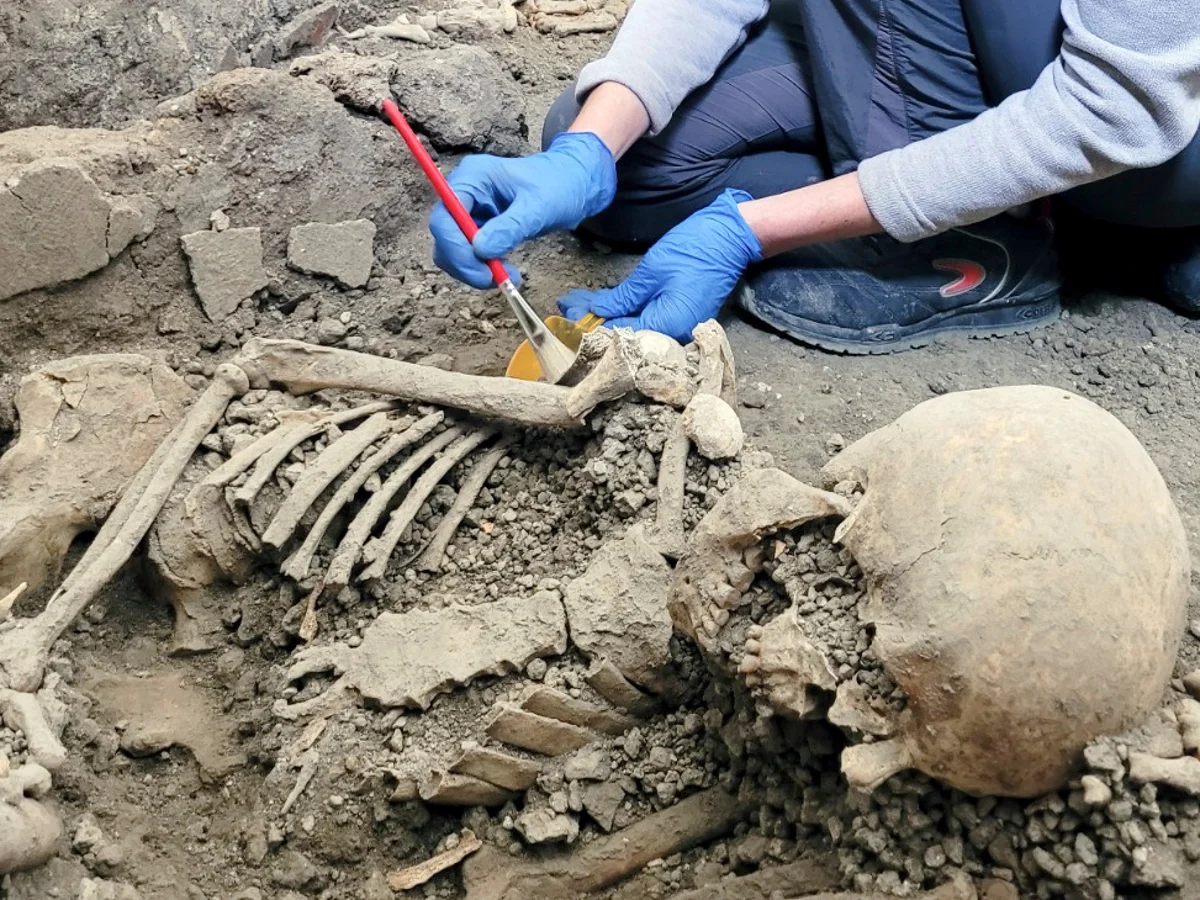
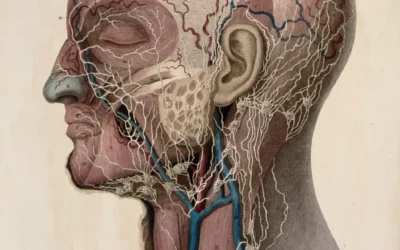



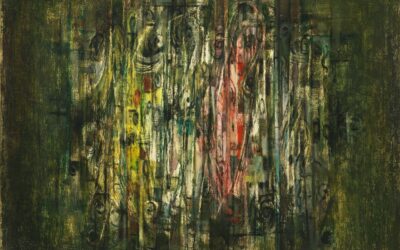


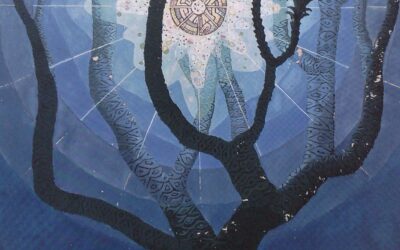

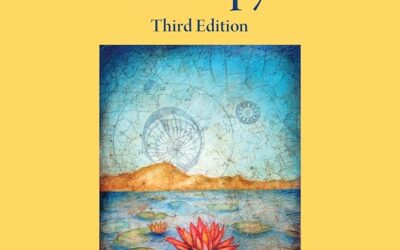
0 Comments